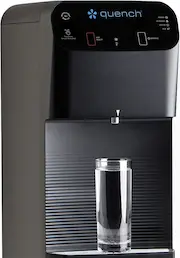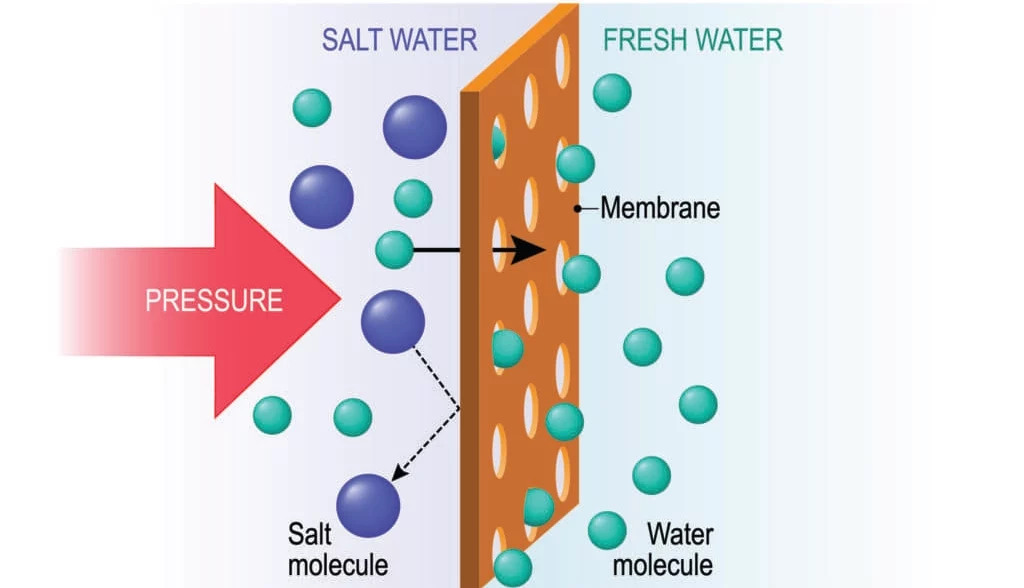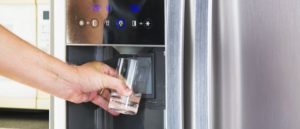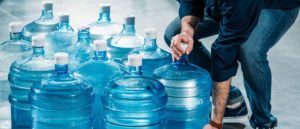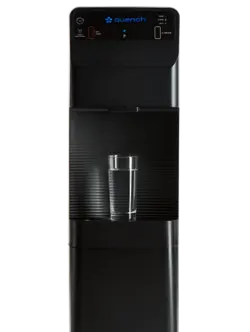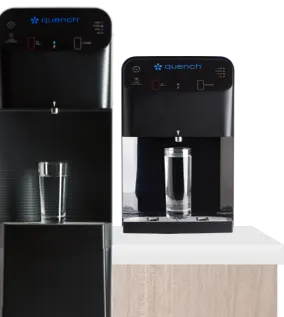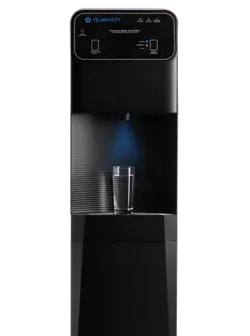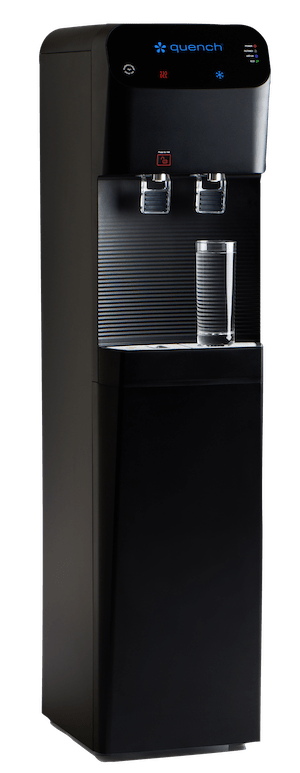Everybody prefers odorless, tasteless water to drink, and its accessibility is something many Americans might take for granted. Although it’s great to find a workplace that values offering safe, accessible drinking water to employees, it’s actually the law.
According to the Occupational Safety and Health Administration, the expectation for employers in the United States is to “provide potable drinking water in amounts that are adequate to meet the health and personal needs of each employee,” and “The employer shall dispense drinking water from a fountain, a covered container with single-use drinking cups stored in a sanitary receptacle, or single-use bottles.”
This means that, as an employer, you’re expected to provide employees with access to potable drinking water. If state or municipal water is considered potable, then that ‘should’ be enough, right? Not always. In many locations across the country, tap water often meets the bare minimum EPA filtration and sanitization requirements – meaning it’s possible your workplace tap water has contaminants even if it’s been treated by local water treatment plants.
It’s also important to note that there should be enough water for everyone at the workplace to have their allotted recommended amount. The adage of 8 cups a day holds true and can be used as a guide when considering how much water you need for your staff. You can save time calculating by installing a bottomless clean water source.
Employers should make sure that they provide their employees with safe drinking water by installing a filtration system that removes contaminants like bacteria, viruses, and heavy metals from tap or surface water. The better hydrated, healthier, and happier your employees are, the better and more productive they’re going to feel.
What Are Total Dissolved Solids?
Total Dissolved Solids (TDS) are all the good and bad elements in your drinking water. These can be organic and inorganic substances such as minerals, salts, metals, cations, or anions dissolved in water. The TDS level is measured in parts per million (PPM) and milligrams per liter (mg/L). The higher the TDS, the more minerals are dissolved in the water. The World Health Organization (WHO) sets out guidelines for drinking water quality that include the recommendation that water with TDS below 300 PPM is considered safe for drinking. However, most authorities accept 500 PPM.
In the United States, the average is 350 PPM of TDS in standard drinking water from the tap. Although this falls over the WHO recommendations, it’s still considered safe to drink. It’s important to note that with measurements being predicted in parts per million, it’s going to take some sophisticated equipment to catch every substance. Usually, total dissolved solids are tested using a TDS meter which uses electricity to determine the conductivity of the water and uses that data to determine TDS level results.
It’s a good idea to know the types of substances that can be found in drinking water – and in some cases, their health implications. Some of these include:
Organic substances:
- Algae
- Bacteria
- Disinfectants
- Hair
- Herbicides
- Pesticides
Non-organic substances:
- Aluminum
- Ammonium
- Arsenic
- Bicarbonate
- Barium
- Calcium
- Chloride
- Chromium
- Copper
- Cyanide
- Fluoride
- Lead
- Magnesium
- Manganese
- Nitrates
- Phosphate
- Silver
- Selenium
- Silicate
- Sodium
- Sulfate
How Do We Measure TDS in Workplace Water?
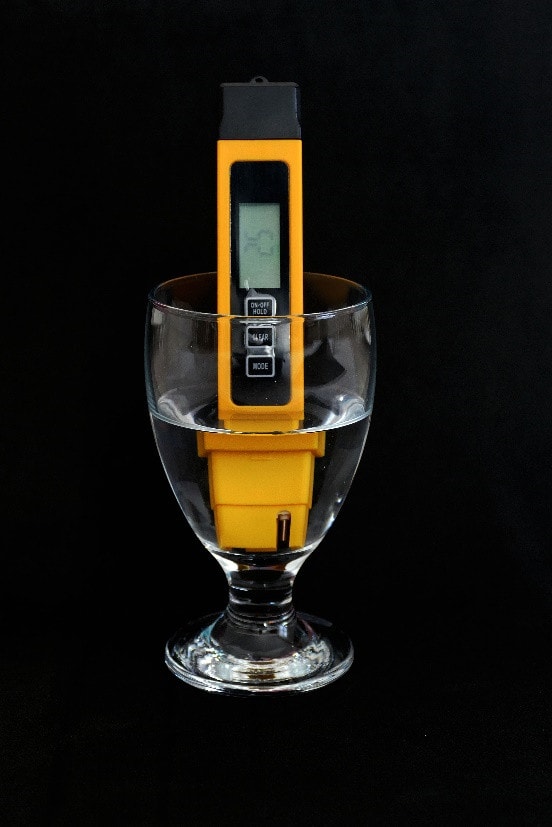
There are a few different ways to measure TDS. The most common way is by using a water hardness test kit. This will give you the total dissolved solids in your water. You can also use a TDS meter which will give you an accurate reading of the TDS levels in your water. These meters can test TDS through conductivity, which measures the electrical conductivity of the water. It can also be measured through an evaporative salt test, which measures the concentration of dissolved salts in the water by weight. Or, through an ion exchange test, which measures the concentration of ions in a solution by weight.
We have to be careful about how we measure TDS because it can be misleading if it’s not done properly. If we use the wrong type of test kit, we could end up with inaccurate readings that are too high or too low depending on the type of kit used. We’ll also point out here that some minerals are so small that they won’t even get picked up by those kits you could purchase for your workplace. Therefore, trusting a filtered, safe drinking water solution is much more reliable and time-efficient.
Do Total Dissolved Solids in Drinking Water Present Health Risks?
As found by WHO, TDS in drinking water primarily originates from natural sources, sewage, industrial waste, urban run-off, and chemicals used in the water treatment process. Inorganic minerals are considered inert because they don’t contain enzymes and therefore aren’t usable in the physiological process of human cell growth. These harmful minerals accumulate because the body cannot excrete or use them.
In most instances, TDS in your drinking water will not present a health problem but it’s important to note, should TDS levels exceed 1,000 mg/L, the drinking water can be considered unfit for human consumption. If you’re interested in finding out what solids are in your drinking water, it can be useful to have a TDS water meter available at your workplace. This is a small hand-held device used to indicate the amount of total dissolved solids. Additionally, you can invest in a water test kit that will tell you exactly what’s in your water – including the good and bad dissolved solids.
The Major Concerns With High TDS in Drinking Water
There are many concerns about high total dissolved solids in drinking water. Some of the biggest issues are that high total dissolved solids can lead to kidney stones, especially when hard water levels are over 500 PPM, and other health problems like heart disease and diabetes. High levels of TDS can lead to gastrointestinal problems, such as stomach pain and diarrhea, and in extreme cases, cause kidney disease, liver disease, and even death.
High TDS in drinking water can also cause an unpleasant taste or smell in the water, which would lead some people to choose not to drink it. In effect, this can lead to dehydration. As previously mentioned, dehydration can become a serious health problem, but it also affects cognitive ability in the workplace.
Signs that tap water may have elevated levels of TDS include nausea and vomiting, dizziness, and diarrhea.
How high TDS water affects the health of the consumer will also be determined by the solids present in the water. Drinking water contaminated with an elevated level of human feces, such as what might be found in a public bathroom sink, could make the drinker much sicker than drinking water with high levels of sodium or sugar.
Zero or a very low TDS level in drinking water, for example, between 50 and 250 PPM can also be detrimental to our health. Not every dissolvable solid in water is unhealthy. Minerals such as magnesium, calcium, and some organic matter such as amino acids and natural sugars can be beneficial additions to our diets. Therefore, it’s helpful to take an approach to filtering TDS with a grain of dissolved salt – literally – between 300 – 500 PPM. TDS filters can eliminate high concentrations of toxins from drinking water, like lead, and leave behind those minerals and vitamins we need.
The Benefits of Encouraging Proper Hydration at Work
It’s easy for employees to get absorbed in their daily work. Some may not even consider hydration until lunch and may end up choosing soda, coffee, or other diuretic beverages to energize themselves. According to a National Coffee Data Trends report, in 2021, 58% of Americans drank coffee every day. While we spend much of our time at work, this number can add up when we’re attempting to keep our focus sharp and stay productive. But filtered drinking water can be just as effective.
Research from the National Library of Medicine states that even a dehydration rate of 1% can noticeably impact the cognitive ability of a worker by 12%. A 4% dehydration rate brings the lack of productivity in employees to a rate of 25%. Therefore, if 4 employees are feeling dehydrated, you’re losing out on an entire employee’s worth of labor. It’s an interesting consideration because studies also report that 75% of Americans are chronically dehydrated.
So, while employers may feel their staff is doing ‘just fine’ with filling up their water bottles from the breakroom tap – or dare we say it, the bathroom sink – just think about how much better the overall productivity of the workplace will increase simply by promoting water breaks and encouraging hydration with a filtered system.
We shouldn’t need to point out that, not just employees, but no one, should be drinking water from the same room as a toilet. It’s unsanitary and can lead to serious health implications and possible legal implications if an employee gets sick.
Effective hydration from filtered or distilled water leads to higher productivity, better mental clarity, and an overall sense of well-being. By removing the odors and tastes resulting from bacteria, chemicals, and more (all considered TDS), water just tastes better, is more likely to be consumed regularly, and will quickly make a difference in the health and happiness of employees.
Better Water With Quench
Take a step that gives you high-quality, filtered, and refreshing water with a Quench bottleless water dispenser.
More about Quench technologies:
Carbon Filtration
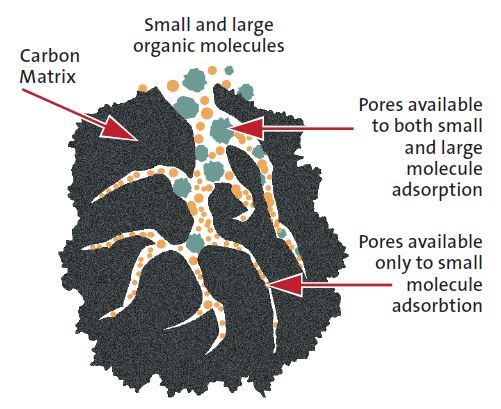
Infographic courtesy of elgalabwater.com
Carbon filtration is a process that removes impurities from water by adsorbing them on the surface of activated carbon. This system removes chemicals and other substances from water that can cause health problems or unpleasant tastes and odors. The process of carbon filtration is simple and efficient. The water passes through a filter that contains activated carbon particles that are in contact with air. The air will cause the particles to oxidize and release electrons that will bind to contaminants in the water, such as organic compounds or metals, rendering them harmless for consumption.
Some of the most common substances removed by carbon filters are chlorine, lead, mercury, benzene, and MTBE. Quench carbon filters are the first line of defense against bad taste, odor, and color. Our water dispensers can filter harmful chemicals to deliver the highest quality and contaminant-free water.
Reverse Osmosis
Reverse osmosis (RO) works by forcing water under great pressure against a semi-permeable membrane that allows molecules to pass through while excluding contaminants. RO provides a higher level of filtration by effectively removing dissolved substances such as acid, salts, nitrates, pesticides, and arsenic, to name a few. You really don’t want any of these particles in your water as apart from being unpleasant, the chances are the particles may contain bacteria. This type of filtration is ideal when the water source is unknown or is known to carry contaminants in the water.
Quench is a US bottleless water dispenser provider offering a comprehensive filtration solution. Our full selection of bottleless dispensers ensures your employees are delivered cleaner, safer water. quenchWATER+ filtration reduces harmful levels of inorganic contaminants through sophisticated reverse osmosis filter systems. Bottleless water filter systems are also an excellent investment for an organization because it reduces the amount of waste produced by employees and removes the need for bottled water, which can be expensive for a company over time.
Get a free quote for any of our bottleless dispensers to start seeing the positive impact clean, safe drinking water can have on your employees.
